#012 Overtourism & Geo-Social Tools
Explore how tourism presents opportunities and challenges to local communities and territories. Gain insights in how tourism apps are affecting local communities, into how digital tools, social media, and mapping apps offer new opportunities of storytelling to foster more sustainable tourism.
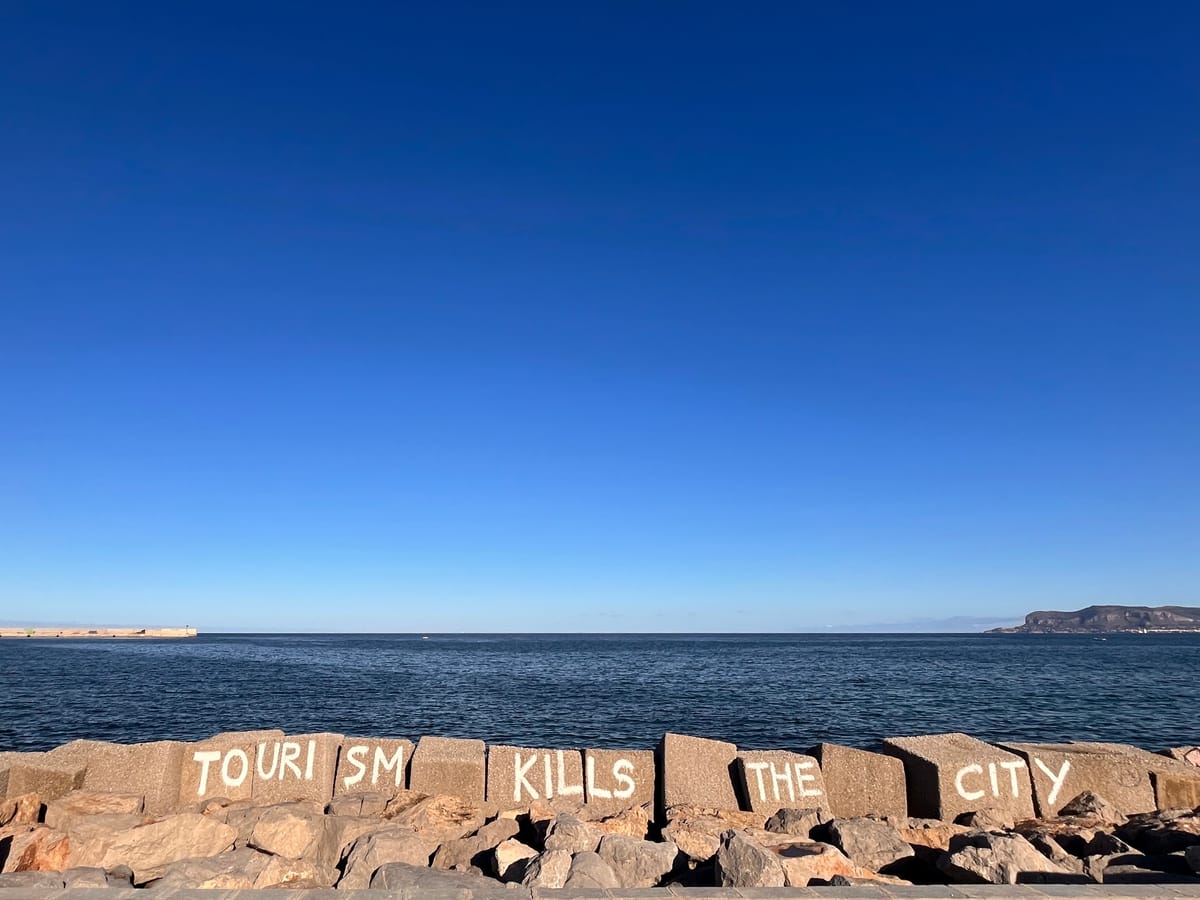
Welcome back Hotpot Readers and Happy New Year!
Before we dive into the 12th Hotpot issue about the intersection of tourism, social media, and mapping apps, here are a couple of updates:
After a year of writing and publishing, I feel Hotpot has organically found its focus in exploring how technology shapes behavior. This could be the guiding thread moving forward, at least for some time. Thank you for reading Hotpot and supporting my work.
Comments are active! From now on you can comment on each post and begin a conversation in the open. Of course, you can always reach out privately by writing to hotpot@andreabrena.com
Let's dive into this issue!
"Nobody goes there anymore. It's too crowded."
Yogi Berra (an American baseball player) on why he no longer visited Ruggeri's restaurant in St. Louis
Berra's humorous quip captures a fundamental tension in modern tourism: the way discovery inevitably leads to transformation. In an age of unprecedented mobility and connectivity, the authenticity of a local experience can quickly become the victim of its own popularity.
In this Hotpot issue, we are navigating through a reflective exploration of how tourism, technology, and social media intersect generating impact to local communities and territories.
The Tourism Paradox
In "The Case Against Travel" published in the New Yorker in 2023, philosopher Agnes Calard, argues the assumption that travel is inherently enriching and morally elevating, examining how what we mean as tourism today, can often be shallow, extractive, and exploitative rather than transformative and mutualistic.
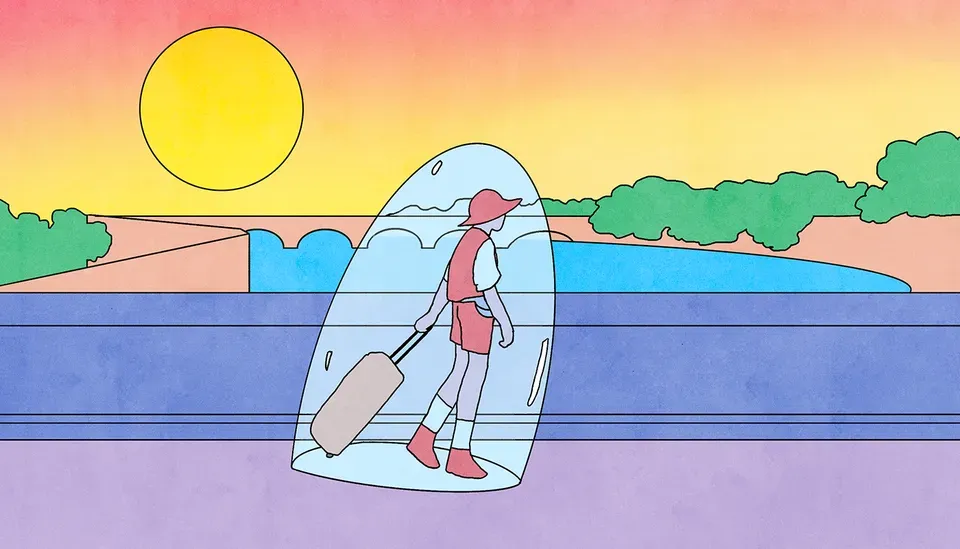
Among many, two major forces are reshaping how we travel and experience places that stand out to me: the democratization of travel through low-cost flights and vehicle-sharing, and the digitization of discovery through social media platforms and location-based apps.
Technology is transforming tourism—from the conversion of quiet destinations into tourist hotspots to the role that digital platforms and design play in either protecting or exposing vulnerable territories. Through this lens, we examine the opportunities and threats that modern tourism presents to destinations and their communities.
Adriano Olivetti, the entrepreneur and thought leader behind its omonimous brand, in "Città dell'Uomo" envisioned his factory as an engine of progress for its local community and territory.
What if Olivetti's vision, which is still so progressive and contemporary today, was applied to tourism?
What if tourism was an engine of progress for any given destination?
What if destination managers, local administrators, and local communities converged and collectively defined what progress means to them?
The Transformation of Place
Tourist in my hometown
During a recent walk in Bergamo's upper town, I felt like a tourist in my own city. The streets I once knew are now filled with transient crowds, and the familiar atmosphere has taken on an "amusement park" vibe, making the city's high streets indistinguishable from countless others. This experiential shift reflects a profound transformation of the city's social fabric and cultural identity.
Bergamo's story echoes across many cities facing similar challenges as the democratization of travel and the rise of digital platforms contribute to reshaping traditional tourist patterns.
Overtourism and Short-Term Rentals
The residential building opposite to our flat in Berlin has no residents, it is fully dedicated to short term rentals. We virtually have no neighbors.
Apartment hunting has become fraught with inflated prices because short-term rentals promise higher returns than long-term leases. Suddenly, you look around and realize that what was once your community is morphing into an ever-rotating population of strangers.
To see how sweeping these changes can be, data and its spatial visualization can be illuminating.
The website Inside Airbnb aggregates and visualizes Airbnb listings, revealing concentrated clusters of short-term rentals.
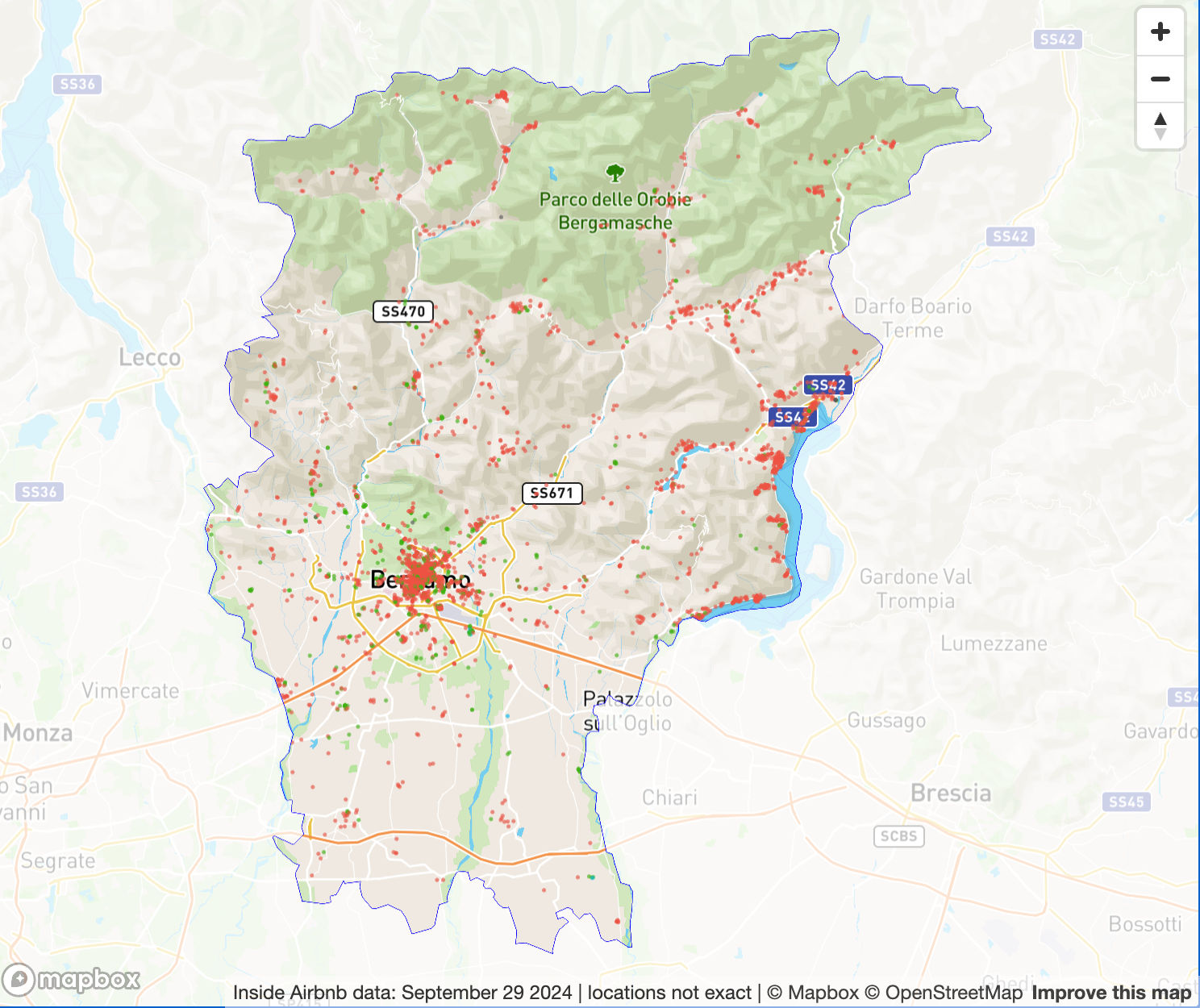
When exploring the datasets provided, such as the percentage of short-term vs long-term rentals, or the listings x account, new truths emerge. Have a look yourself and see if insideairbnb lists your city of residence or interest and try asking yourself questions like:
Which neighborhoods are most saturated, and how does this affect local housing?
Are a handful of commercial hosts dominating certain areas?
Have nightly rates soared in parallel with local rent prices?
Do neighborhoods with high tourist turnover yield more complaints or lower review scores?
How does short-term stay availability intersect with local housing shortages?
Such insights can help spotlighting some of the underlying inequalities and pressures that overtourism brings to communities once seen as “hidden gems.” This evidence can support arguments carried by destination managers that have at heart not only the financial gains that tourism brings to a given area but also the well-being of the local community and territory.
Place-Centric Design Approach
With short-term rentals taking over the city centers, the city centers themselves are morphing to satisfy the needs of voracious hoards of visitors that seem to adhere to a "we travel therefore we consume" ethos.
The New Economics Foundation captures this phenomenon in their concept of "Clone Towns"—places where authenticity gives way to tourist-centered experiences. This fast-consumption approach creates what sociologist George Ritzer terms "McDonaldization", gradually eroding local character and cultural identity.
Yet this transformation isn't inevitable. Rather than pursuing purely tourist-centered solutions, cities and territories can develop place-centric design approaches that serve visitors while protecting local communities and environments. While easier said than done, this re-orientation toward place-conscious development offers a promising direction for including design methodologies in the planning of destinations.
Design methodologies can help humanize problems as they are rooted in cultural research. They could help envision a destination experience and its user journeys, the collaboration dynamics across all stakeholders, and the overall impact on the community and territory well-being. As there is no playbook that fits all, an exchange forum where learnings and experiences are shared to be examined and recontextualized to new territories could also become a reality.
Social media and the ethics of "Geo-Spoiler"
Authenticity, Curation, and Discovery Authorship
Even in an age of gentrification and the global homogenization of cities, authenticity remains. It may seem buried beneath chain stores and tourist traps, but it can still be found if one knows how and where to look.
With access to endless information, we are naturally drawn to seek trusted references, for specialist figures that can provide us access to filtered and curated experiences, so that we can experience only the very best (within our possibilities).
We are constantly on the hunt for curators. Tourism curation is a function that has been historically held by editorial projects like local and global tourist guides, but with the advent of social media platforms a wave of enthusiasts and "pro-am" (professional amateurs) have democratized information and created new forms of place and travel storytelling that have changed how we prepare our journeys, who we trust, and what we aspire to do or be.
As I was planning my sabbatical journey, I consulted a wide variety of sources, from travel guides and books to official tourism websites. Of course, I relied on social media as well and found myself somewhat uneasy browsing reels and tiktoks compiling ranks of must-see places. My concerns were twofold: first, the potential overload of visitors at untouched natural sites; second, the growing trend of wanting to broadcast every discovery online.
Is it ethical to broadcast a secret spot for public consumption and potentially instrumentalize the beauty of a place for personal online gain?
What exactly motivates so many content creators to become de facto internet travel guides, showcasing every corner of their adventures?
Geo-Spoiler Alert!
One central question is whether widely publicizing lesser-known spots ultimately exploits or protects them. On the one hand, increased attention can spur economic development and bolster local businesses. On the other, overtourism can strain infrastructure, degrade natural habitats, and dilute cultural authenticity, undermining the very features—pristine nature, unique cultural practices, local flavors—that made the place special in the first instance and ultimately leading to the paradox of tourism.
The virality of storytelling and geographical information might turn what were once untouched places into real tourist hotspots as if they were sacrificed destinations in the name of the financial gains that come with tourists.
I am not the first to have such concerns, of course, and there are even sustainable tourism guidelines defined by UN Tourism in their manifesto. While I doubt that this is on the radar of the average tourist, it is still an important reference, that can help every stakeholder in their interpretation and materialization of such principles.
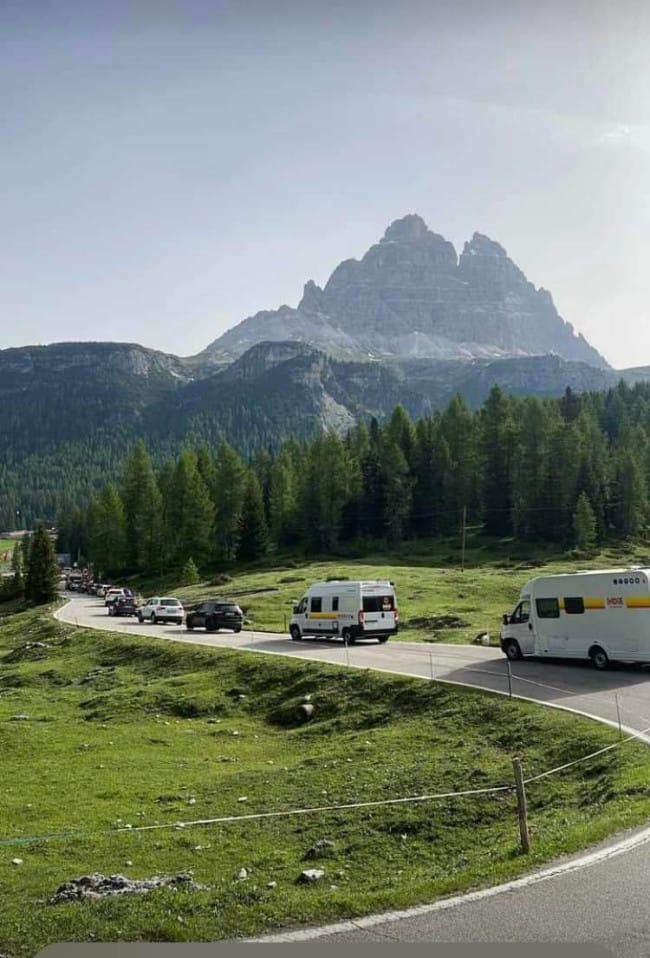
Driving Forces To Travel Wisdom
Travel content creators are driven by a mix of social, psychological, and economic factors. There are a few concepts that I find quite on point with what I am observing.
"Impression Management" (Erving Goffman, The Presentation of Self in Everyday Life, 1959) explains how creators curate an aspirational, adventure-focused image likening social interactions to a theatrical performance. In other words, strategic self-presentation. We build characters, personal brands, and different personas across different platforms, curating and presenting only determined facets of our lives.
"Self-Determination Theory" (Deci & Ryan, 2000) highlights the motivators and core needs for human well-being and motivation which are the search for autonomy, competence, and relatedness. From choosing what content to publish and who to associate with to reinforcing value through engagement metrics, to ultimately feeling part of something bigger than ourselves. Did anyone say community?
"Social Capital" (Bourdieu, 1986) and "Monetization" (Khamis, Ang, & Welling, 2017) further propel influencers to showcase hidden gems, positioning themselves as tastemakers or curators, growing trust among their followers, fueling fear of missing out (FOMO) among followers and emulation, and ultimately leading to more lucrative deals with partners interested in leveraging an engaged audience.
Ultimately, these dynamics shape how and why creators become informal travel guides online.
Potential Opportunities
Balancing the desire to share beautiful places with the responsibility to protect them is no small feat.
Creators, often inadvertently, walk a fine line between promoting economic vitality and contributing to cultural or ecological degradation. Ultimately, whether hidden gems are “exploited” or “protected” depends on how thoughtfully (or thoughtlessly) we use the platforms at our disposal.
By staying mindful of the social, cultural, and environmental ramifications of our travel posts, and by grounding our actions in well-researched principles of sustainable tourism, we can pave a pathway to more ethical and mutually beneficial travel storytelling.
Exposing lesser-known destinations can boost local economies and preserve cultural heritage, but it also requires ethical responsibility. Cultural sensitivity, environmental safeguards, and respectful storytelling are crucial to avoid harming fragile places.
Destination Management Organizations (DMOs) could adopt guidelines to monitor online content, partner with creators, and ensure sustainable destination promotion.
If you work in a DMO, a tourism consortium, or local administration, feel free to reach out—these questions lie at the heart of my ongoing research.
Questions about how tourism affects local communities have become more pressing:
How do we ensure that travel is not only personally enriching for the visitor but also beneficial, or at least not destructive, for the host destination?
How does tourism affect the social and cultural fabric of a place?
Mapping and Geo-Social Tools
At the beginning of this issue, I talked about two main forces of change, the democratization and commodification of travel and the revolution of discovery and navigation thanks to social media platforms and location-based apps. Digital platforms are the primary mediators between tourists, visitors, travelers, explorers, and the destination we visit revolutionizing how we choose destinations, plan trips, and interact with locals.
At BTO, Be Travel Onlife, a tourism and digital event I attended in November out of curiosity, in the panel hosted by Fiorenza Favero from Komoot, an important data point stood out. 48.1% of travelers use apps to plan their journeys.
Geo-Social: Komoot and the Power of Sharing Routes
Komoot is a mapping app that encourages users to discover and share walking, hiking, and cycling routes. It is what you could call a geo-social network.
Komoot has changed the way I relate to my surroundings, revealing endless user-generated routes that I never knew existed. As I started using the app more intentionally and actively, planning my trips, and organizing or tracing new routes, I started considering whether I should make my walks public or not. To reveal or not to reveal my hidden gems, this is the question.
While such tools can enrich how we experience both nature and urban spaces, they also carry risks of inadvertently “spoiling” lesser-known spots. On social media, a viral post about a picturesque destination can lead to overcrowding, environmental degradation, and a loss of the very tranquility that made these locations appealing in the first place, does the same apply to geo-social media?
Greg Dickinson published this article in the Telegraph titled: Liked to Death – five places that Instagram put on the map, then ruined.
As Andrea Gelsomino of The Outproject aptly noted in the same panel I attended at BTO:
“Is paradise found a paradise lost?”
I see an incredible opportunity in promoting the strategic use of geo-social platforms to tourist consortiums, national parks, local administrations and organizations, and event organizers, to manage the delicate relationship between a territory, its local community, and its visitors, for example, mediating the distribution of visitors flow by promoting off the beaten paths and areas alleviating pressure on overcrowded hotspots.
Maps as a Powerful Medium
Maps are not merely navigational aids; they are transformative technologies that shape how we perceive and engage with the world. Maps are mediums of abstraction, projection, and imagination.
The GIS (geographic information system), is a powerful canvas on top of which new narrative or informative layers can be added. Let's have a deeper look at why maps have never been as powerful as today and if you want to have a general smattering on the topic check out this free book on the "science of where". Inspiring.
Today, one does not need to be a professional geographer to harness the power of GIS or web-based mapping platforms. From everyday navigation to ordering takeout, from planning a trip to renting a home, maps are fundamental interfaces that inform and facilitate our interactions with the physical world.
Digital navigation systems have evolved from simple A-to-B functionalities into powerful multilayered engines of discovery and data visualization.
For a technical history of digital maps, look no further than the article by Matt Forrest.
Apps like Google Maps, have transformed the experience of wandering through a city in an optimized journey between highly rated POI (points of interest) generating worn tourist paths that concentrate and channel visitors in or along specific areas while leaving others unexplored.
Within this framework, there are dynamics of inclusion and exclusion often defined by algorithms and not necessarily in the control of destination managers and administrators.
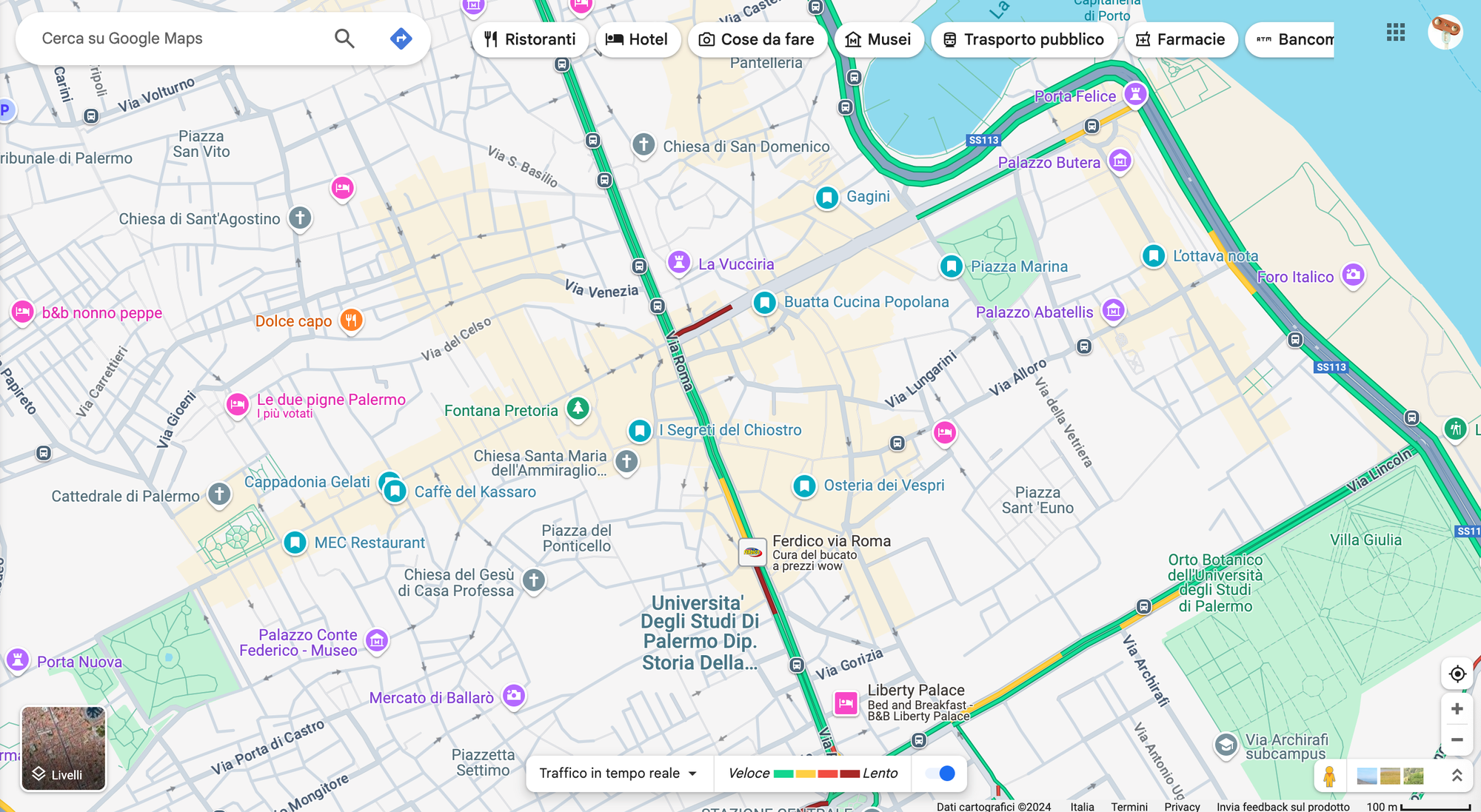
As travelers (and locals) rely more and more on location-based services to plan and wander through destinations, there are emerging opportunities for destinations to leverage this technology to their own advantage and to reach their goals.
There are interesting projects I invite you to check out that interpret the opportunities:
The “5-minute walk” is an urban design principle that places vital amenities—like shops, schools, or transit—within a quarter-mile radius, making them accessible in about five minutes on foot. By concentrating daily necessities so closely, neighborhoods reduce car dependency, encourage social interaction, and promote healthier, more engaging communities.
“A Platform for Place-Based Storytelling” is a digital framework by Accurat, a data visualization agency I absolutely admire, that layers narratives, data, and geography to reveal a deeper understanding of places. By combining interactive maps and personal accounts, the platform turns locations into immersive storytelling hubs, encouraging communities to explore, share, and connect through the stories of their environment.
Conclusion
It's been a lengthy post that has explored some of the aspects that tie tourism with technology and social media, with technical enablers and new forms of storytelling, creating both opportunities and challenges for local communities and territories.
This piece only scratches the surface, and while I have touched upon different topics such as the transformation of places, digital tourism apps and mapping tools, tourism, and social media; it is important to acknowledge that tourism, in all its complexity, is shaped by a mosaic of forces of change that range from political, to economic, cultural, and in case of this piece, technological.
Tourism is a general term that can see the infinite manifestation of itself.
This piece is an invitation to look at the explorer within us more critically, asking ourselves why and how we travel, considering more respectful and mutualistic approaches to exploring the world around us, and to keep probing how destinations can create the necessary conditions for long-term and mutualistic exchange with tourists.
As I venture into this new domain of practice, I invite dialogue with anyone interested in rethinking the design and strategy of their destination. Whether you’re a local administrator, a tourism consortium, a curious traveler, or a technologist interested in this topic as well, don't be a stranger and reach out.
Thank you for reading.
If you have been forwarded this blog post and you enjoyed it, don't miss out on future issues by signing up below.
Until next time!
Andrea